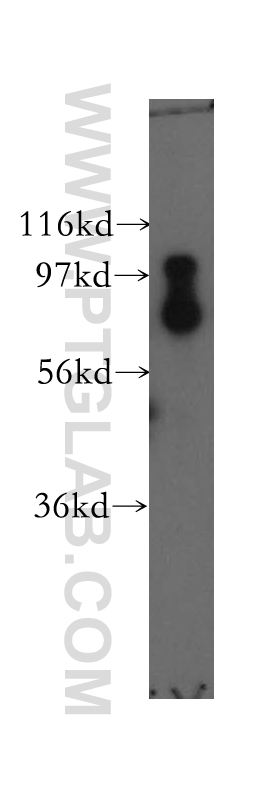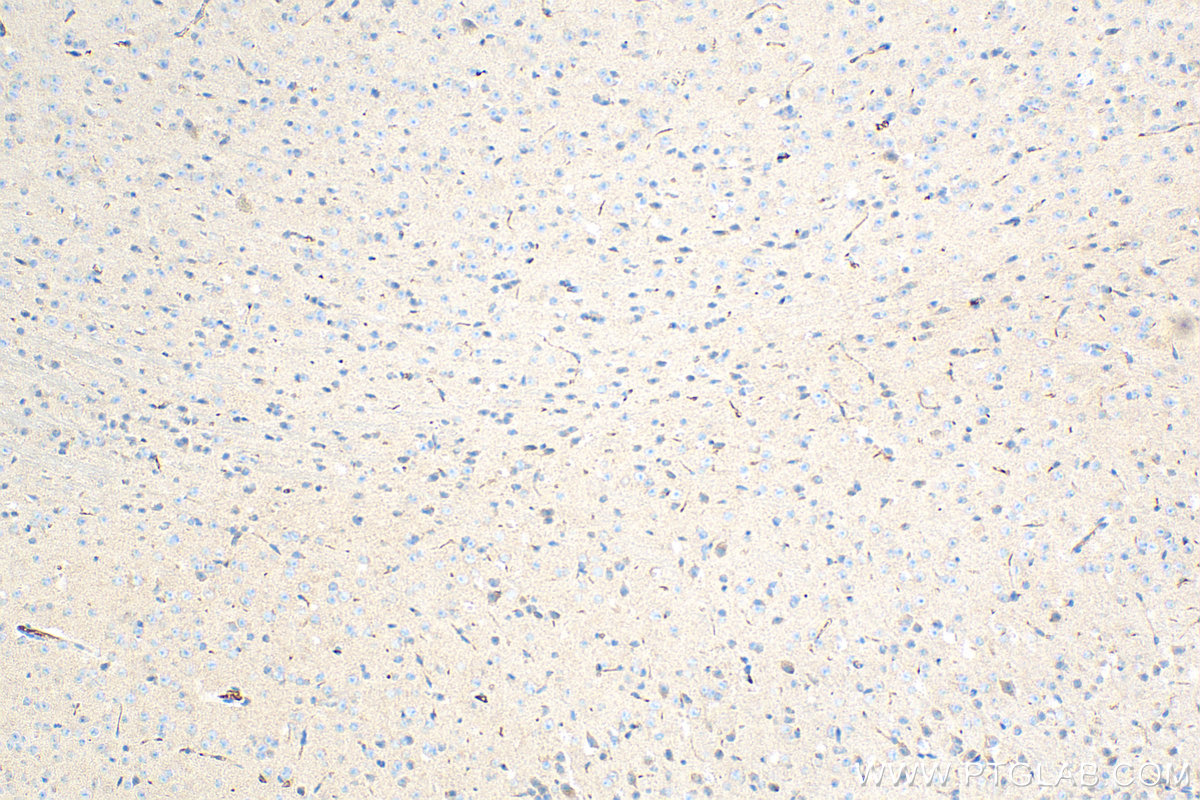验证数据展示
经过测试的应用
| Positive WB detected in | HEK-293T cells, NIH/3T3 cells, mouse uterus tissue, Jurkat cells, HeLa cells, HepG2 cells |
| Positive IHC detected in | mouse brain tissue, mouse cerebellum tissue Note: suggested antigen retrieval with TE buffer pH 9.0; (*) Alternatively, antigen retrieval may be performed with citrate buffer pH 6.0 |
推荐稀释比
| 应用 | 推荐稀释比 |
|---|---|
| Western Blot (WB) | WB : 1:5000-1:50000 |
| Immunohistochemistry (IHC) | IHC : 1:50-1:500 |
| It is recommended that this reagent should be titrated in each testing system to obtain optimal results. | |
| Sample-dependent, Check data in validation data gallery. | |
发表文章中的应用
| WB | See 1 publications below |
| IF | See 2 publications below |
产品信息
12325-1-AP targets SCYL2 in WB, IF, IHC, ELISA applications and shows reactivity with human, mouse, rat samples.
| 经测试应用 | WB, IHC, ELISA Application Description |
| 文献引用应用 | WB, IF |
| 经测试反应性 | human, mouse, rat |
| 文献引用反应性 | human, mouse |
| 免疫原 |
CatNo: Ag2988 Product name: Recombinant human SCYL2 protein Source: e coli.-derived, PGEX-4T Tag: GST Domain: 157-505 aa of BC012387 Sequence: NNLNLNQFNSFISVIKEMLNRLESEHKTKLEQLHIMQEQQKSLDIGNQMNVSEEMKVINIGNQQIDKVFNNIGADLLTGSESENKEDGLQNKHKRASLTLEEKQKLAKEQEQAQKLKSQQPLKPQVHTPVATVKQTKDLTDTLMDNMSSLTSLSVSTPKSSASSTFTSVPSMGIGMMFSTPTDNTKRNLTNGLNANMGFQTSGFNMPVNTNQNFYSSPSTVGVTKMTLGTPPTLPNFNALSVPPAGAKQTQQRPTDMSALNNLFGPQKPKVSMNQLSQQKPNQWLNQFVPPQGSPTMGSSVMGTQMNVIGQSAFGMQGNPFFNPQNFAQPPTTMTNSSSASNDLKDLFG 种属同源性预测 |
| 宿主/亚型 | Rabbit / IgG |
| 抗体类别 | Polyclonal |
| 产品类型 | Antibody |
| 全称 | SCY1-like 2 (S. cerevisiae) |
| 别名 | CVAK104, KIAA1360, SCY1 like 2 (S. cerevisiae), SCY1 like protein 2, SCYL2 |
| 计算分子量 | 929 aa, 104 kDa |
| 观测分子量 | 104 kDa |
| GenBank蛋白编号 | BC012387 |
| 基因名称 | SCYL2 |
| Gene ID (NCBI) | 55681 |
| RRID | AB_2071019 |
| 偶联类型 | Unconjugated |
| 形式 | Liquid |
| 纯化方式 | Antigen affinity purification |
| UNIPROT ID | Q6P3W7 |
| 储存缓冲液 | PBS with 0.02% sodium azide and 50% glycerol, pH 7.3. |
| 储存条件 | Store at -20°C. Stable for one year after shipment. Aliquoting is unnecessary for -20oC storage. |
实验方案
| Product Specific Protocols | |
|---|---|
| WB protocol for SCYL2 antibody 12325-1-AP | Download protocol |
| IHC protocol for SCYL2 antibody 12325-1-AP | Download protocol |
| Standard Protocols | |
|---|---|
| Click here to view our Standard Protocols |
发表文章
| Species | Application | Title |
|---|---|---|
J Neurosci SCYL2 Protects CA3 Pyramidal Neurons from Excitotoxicity during Functional Maturation of the Mouse Hippocampus. | ||
J Cell Biochem Phosphorylated LASS2 inhibits prostate carcinogenesis via negative regulation of Wnt/β-catenin signaling. |










